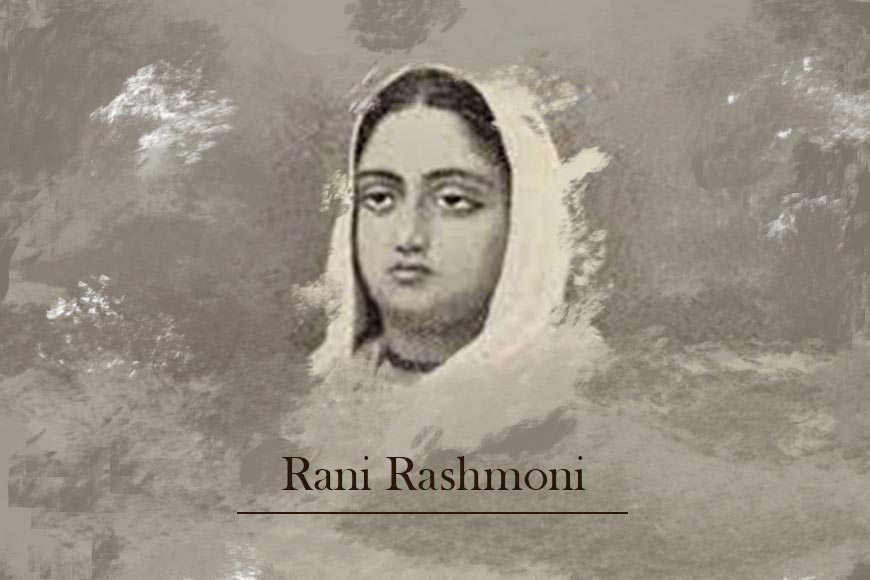The Real Rani -- Rani Rashmoni’s husband taught her how to run a business

We often talk of Rani Rashmoni as the philanthropist linked to Dakshineshwar Temple. But how many of us speak of her business acumen and how she led a business empire annihilating the aspirations of the British traders? GB brings you this 4-part series on The Real Rani -- Rani Rashmoni’s entrepreneurship skills
Rashmoni hailed from an agriculturist Mahishya Hindu family. She was born on 28 September 1793 at Kona village in present-day Halisahar of North 24-parganas. Her father, Harekrishna Das, and mother Rampriya Devi, were both devout Vaishnavs (devotees of Lord Vishnu). Rashmoni lost her mother when she was just seven years old. She was an extremely pretty girl and at the age of 11, she was married to Babu Rajachandra Das (Marh) scion of a rich aristocratic zamindari landlord family of Janbazar in Calcutta. It was third marriage for her husband, Babu Rajchandra Das.
Babu Raj Chandra Das passed away in 1830 when Rashmoni was in her 40s and initially, she was inconsolable after her husband’s demise. The years after his death saw Rashmoni passing through her toughest time. Babu Rajchandra Das had left her a huge estate to manage. Soon, she had to forget her grief and concentrate on the management of the estate.
Babu Raj Chandra Das was an erudite, rich landlord (zamindar) who was way ahead of his time. He was unconventional and liberal in his outlook in an era when it was considered blasphemy for upper-class Hindu Bengali women from honorable families to defy purdah and come out in the open or meddle with issues earmarked strictly for the male bastion. Non-compliance with the preconceived rules was strictly prohibited and those who dared to oppose were shunned and looked down upon by society. Despite the staunch social antagonism, Rajchandra Das always encouraged young Rashmoni to participate in the day-to-day administrative affairs of the vast zamindari estate. Being a fast learner, she picked up the tricks of the trade quickly and proved her efficiency in the management of the estate. In fact, her husband relied on her strong business acumen and consulted her prior to making decisions in financial matters.
Together, they built a great fortune, channelizing much of their wealth towards public welfare, from setting up reservoirs of drinking water for the public, building old age homes and homes for the destitute, and setting up soup kitchens for the hungry. The couple also built three of Kolkata’s oldest and busiest ghats, the Ahiritola Ghat, Nimtola Ghat in North Kolkata, and the beautiful Babu Rajchandra Das Ghat, more familiarly known as Babughat.
Rashmoni and Babu Rajchandra Das had four daughters - Padmamani, Kumari, Karunamoyee, and Jagadamba but no son. Das passed away in 1830 when Rashmoni was in her 40s and initially, she was inconsolable after her husband’s demise. The years after his death saw Rashmoni passing through her toughest time. Babu Rajchandra Das had left her a huge estate to manage. Soon, she had to forget her grief and concentrate on the management of the estate. Battling patriarchy and the then-prevailing societal stigma against widows, the mother of four young daughters took over the reins of the family’s sprawling business – something that was virtually unheard of in those days and she managed everything very efficiently reaping profits from all the ventures.
When Babu Rajchandra Das’s adversaries and acquaintances heard the news of his death, many of them were delighted by the prospect of an easy takeover, assuming that the meek, kind-hearted widow would not provide much resistance. How wrong they were when they realized she was made of tougher mettle. Rashmoni went on to prove her leadership qualities in managing the business and administration of the estate with great alacrity.
Babu Raj Chandra Das was an erudite, rich landlord (zamindar) who was way ahead of his time. He was unconventional and liberal in his outlook in an era when it was considered blasphemy for upper-class Hindu Bengali women from honorable families to defy purdah and come out in the open or meddle with issues earmarked strictly for the male bastion.
She got her daughters married. Padmamani was married to Ramchandra Ata. Kumari was married to Piarimohan Biswas but she died early in 1837. Karunamoyee was married to Mathurmohan Biswas (or famous Mathur Babu). She died two years after her marriage in 1833, soon after childbirth. After her death, Rashmoni arranged her widower son-in-law’s wedding with her youngest daughter, Jagadamba. Rashmoni soon proved a capable administrator and she handled everything with great efficiency. Displaying astute business sense, Rashmoni managed her work with exemplary pragmatism with the help of her son-in-law, Mathur Babu. He was an intelligent and efficient man who gradually began assisting Rashmoni in the business affairs and upkeep of her estate. Rashmoni was also a very pious lady and a mother figure who saw in Mathuramohan the son she had yearned for but could not beget biologically. For the rest of her life, Mathur babu remained her trusted confidante and right-hand man in all her official dealings.
(To be continued)
Source: Rani Rashmoni – Ek Mohiyoshi Nari











